
views
X
Research source
You can learn how to spot the early signs of lameness in your horse by observing your horse’s physical traits as well as his behavior. You should then get the lameness treated so it does not develop into a more serious health issue for your horse.
Looking at the Physical Traits of Your Horse
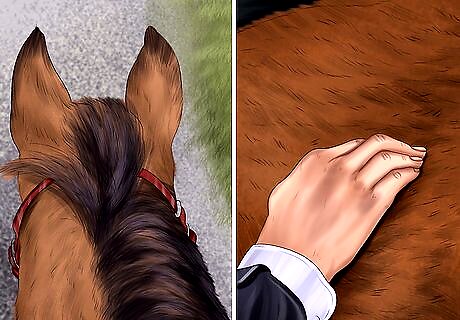
Feel for any sensitive spots on your horse’s body. Start by running your hands over your horse’s whole body, from his head and ears to his torso and down each leg. Notice if your horse flinches, shrinks away, pins down his ears, or flicks his skin as you place your hands on any of these areas, particularly his legs. If he reacts with any discomfort or pain in a certain area, this may be a sign that a muscle is irritated. You should also feel for any obvious swelling on any areas or any heat coming from a specific muscle or spot. These could all be signs of an irritated muscle that is causing lameness in your horse. You can check if your horse looks less muscular from side to side, as his muscles may be smaller and less well-defined if there is pain in that leg from lack of use.
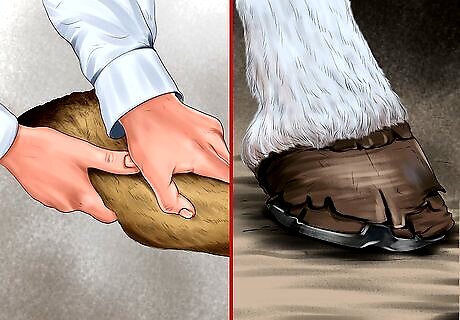
Check your horse’s hooves. You can also check for signs of lameness by looking at your horse’s feet and hooves. Your horse may have lameness in his front leg, for example, leading to pain on his hoof. His hoof may be smaller than the opposite hoof, a sign of possible lameness. You should also look for signs that the shoes or hoof walls are wearing more quickly on the comfortable side. Your horse may be putting his weight more on the comfortable side to avoid putting weight on the painful side or foot that is causing the lameness.
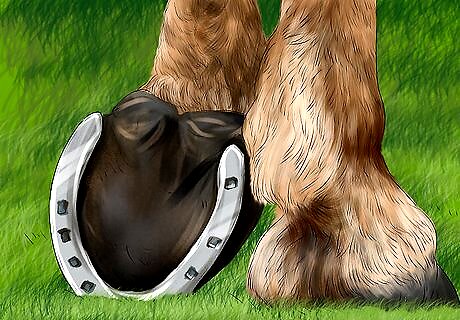
Observe your horse moving and trotting. Have your horse move in a circle, going in both directions. You may have him move around with no rider, and then with a rider. Having him move in a variety of situations can help you pinpoint if he is lame. Notice if the horse looks relaxed and is taking smooth, generous strides. Pay attention to how his head and neck move in rhythm with his neck. If he does not bend smoothly when going in a circle or move the same way in both directions, this may be a sign that he is lame. You might find it helpful to watch your horse in a ring with a fence. This gives you a level surface to judge the animal’s head and makes it easier to see a head bob. You may also notice that he does not have normal head movements and that he is not landing evenly with his feet. He may also be dragging a hoof or stumbling when he moves. As your horse trots, close your eyes and listen to hear whether he drags a hoof as he moves. These are signs of lameness. You can also watch him move from behind. Look at your horse’s rump to see if it rises and falls equally from left to right. You may see a marked hip drop on one side if he is showing signs of lameness. You should also check to see if his back legs move forward in a straight line. If he wobbles or limps on one side, he is likely lame.
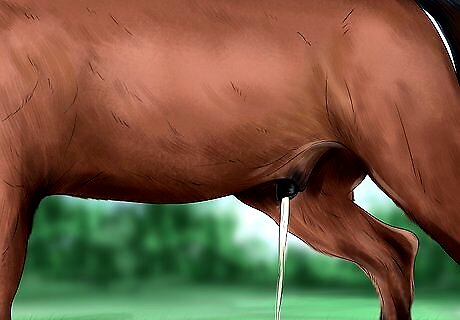
Check if your horse is urinating more often. You may also notice that your horse is going to the bathroom more often than usual, which usually occurs when your horse is experiencing stress or pain. Your horse may urinate more than normal or defecate more often. Horses that are experiencing back pain or muscular hind pain may also go to the bathroom more often than normal when they are saddled and carrying a rider.
Observing Your Horse’s Demeanor and Behavior
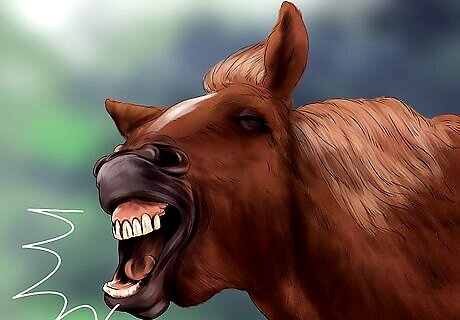
Notice if your horse appears grumpy or irritable. You can also look for signs of lameness by observing your horse’s demeanor, as horses often have a change in personality due to pain or discomfort. Watch your horse for signs of grumpiness or irritability. Your horse may appear more subdued or withdrawn. He may also become more aggressive and appear grumpy day after day. You may notice that your horse is less playful and interested in movement or physical training. This could be a sign that he is in pain or feel discomfort due to lameness. He may be breathing more heavily than usual and sweating more profusely than normal after a training session. This could be because he has to work much harder during training due to lameness.

Pay attention to how your horse interacts with others. Your horse may also isolate himself from the other horses as part of his reaction to being in pain. You may try to bring him back to the herd and see if he avoids interaction with the other horses. This could be a sign that he is uncomfortable and needs medical care. You may observe that your horse is also more aggressive towards other trainers or people in his area or space. This could be because he is experiencing pain and does not want to be around others.
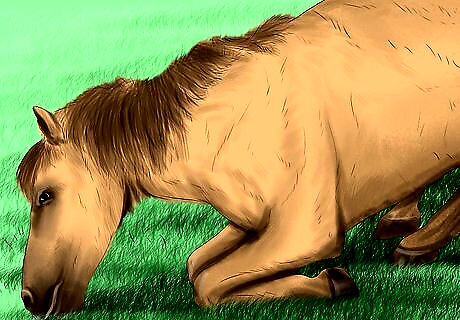
Look for changes in your horse’s appetite and work ethic. You should pay attention to how often your horse feeds. A horse that is lame may have a poor appetite and be less enthusiastic about eating. He may also have a change in work ethic, where he is less excited about exercising and doing physical training. You may also notice that your horse is lying down more often than usual. This could be due to foot pain or lameness. He may be trying to stay off his feet to avoid being in pain. If your horse refuses normal commands (like to go over jumps or pick up certain canter leads), this can indicate he is in pain and doesn’t want to do something that will hurt.
Treating Lameness in Your Horse

Get your horse examined by your vet. If you suspect your horse may be lame, you should get him examined by a vet as soon as possible. You do not want your horse to suffer unnecessarily or for the issue to get worse. Your vet will do a basic physical exam of your horse, feeling his feet, limbs, back, and neck to check for any sore spots. Your vet will have your horse walk on a hard flat surface, to start, so they can observe your horse’s gait. The vet will then want the horse top stand in sand or a soft surface, as this may exacerbate minor lameness and make it easier to see. Your vet may also ask to see the horse move with a rider. This will help the vet assess the degree of the lameness and locate where exactly your horse is experiencing pain. You should therefore bring all your tack (bridle, reins, girth, saddle, and saddle pad) to the appointment, in case the vet asks to see you ride.
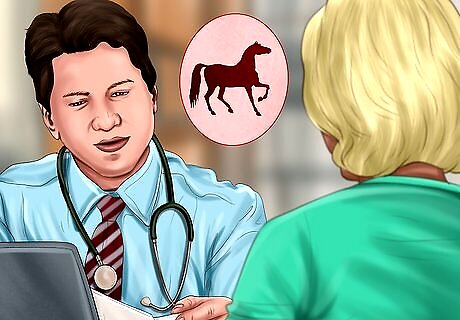
Describe your horse’s symptoms to the vet. You should also provide detailed information on your horse’s symptoms and medical history. This will help the vet come to a diagnosis and get as much information as possible on the state of your horse. You may tell the vet how long you have suspected that something is not quite right with your horse. You should also note any traumatic events in the horse’s life recently or in the past that may have contributed to the lameness. This might include trailer accidents, falls while riding, kicking stall walls, or catching a leg somewhere. You should tell the vet about any similar lameness the horse has experienced in the past and if the lameness now appears worse after resting the horse or after a training session with the horse.
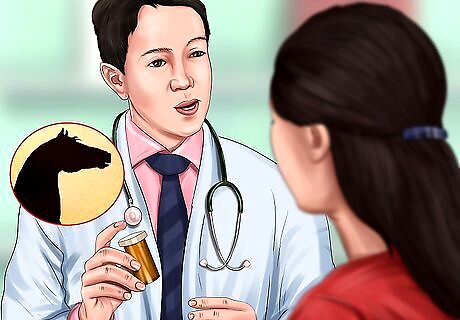
Ask your vet about your horse’s treatment options. Once your vet has determined the exact area on your horse that is lame, they will recommend a treatment. Your vet may suggest painkillers for your horse as well as frog supports for your horse’s feet. Your vet may also recommend bed rest for the horse so the horse can recover. This just means confinement to a stall with hand walking, if recommended. You may need to adjust the horse’s diet during the bed rest so the horse does not become overweight. Consult with your vet about this.




















Comments
0 comment